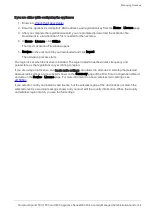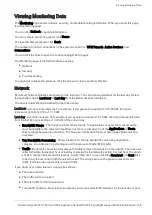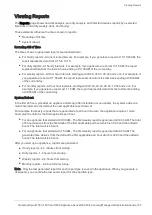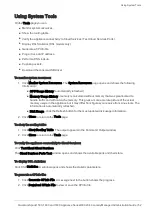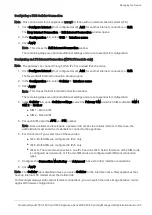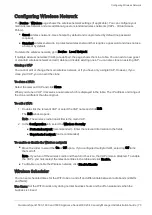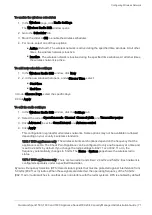
Managing the Device
Quantum Spark 1500, 1600 and 1800 Appliance Series R80.20.40 Locally Managed Administration Guide | 58
n
Obtain automatically (DHCPv6/SLAAC)
.
n
Static IPv6
.
n
PPPoE (IPv6 only)
.
n
PPPoE (IPv6/IPv4)
.
n
IPv6 bridge
– When an IPv6 bridge internet connection is defined, no additional internet
connections can be defined.
n
Dual-Stack Lite (DS-Lite)
n
IPv4 over IPv6 (IPIP)
- Used to carry IPv4 traffic over an IPv6 tunnel created between the
gateway and a server.
5. If you select IPv6 bridge:
n
Select the
Bridge to
.
n
Enter the
Default gateway (IPv4)
and Default
gateway (IPv6).
n
Optional – Enter the
DNS server settings
.
6. If relevant, select the checkbox
Use connection as VLAN
.
7. Configure the fields in the
Connection Monitoring
tab (see below).
8. Configure the relevant fields in the
Advanced
tab (based on the connection type).
9. Click
Apply
.
Prefix Delegation (IPv6 only)
When an internet connection has prefix delegation enabled, the gateway can request a prefix (in addition to
an IP address) from the server and configure an internal network DHCPv6 server that uses this prefix.
Connected devices are then routable without the need to use NAT.
These connection types support prefix delegation:
n
PPPoE-IPv6
n
LAN-IPv6
n
VLAN
n
Switch
n
Bridge
To enable prefix delegation in an IPv6 connection:
1. On the
Internet Connectivity
page, click New to create a new IPv6 connection.
The New IPv6 Internet Connection window opens.
2. In the
Advanced
tab, select the checkbox for
Enable prefix delegation for this internet connection
.
3. Click
Apply
.
Note – Configure the settings for this internet connection in the
Configuration
tab.
A network or bridge with prefix delegation enabled must have the
IPv6 Auto Assignment
set to
SLAAC
,
DHCPv6
, or
Disabled
.
For each delegated network, the behavior depends on the IPv6 Auto Assignment settings:

